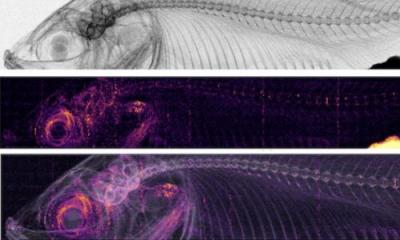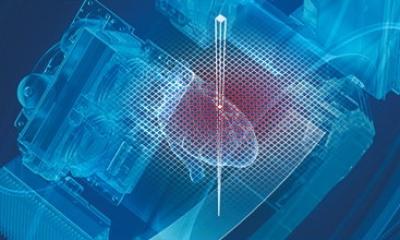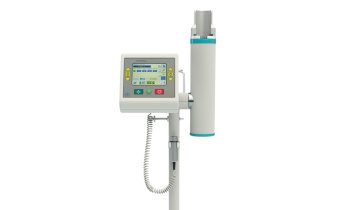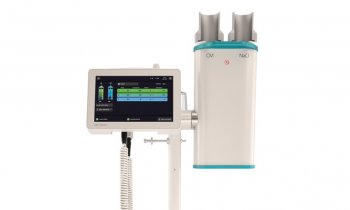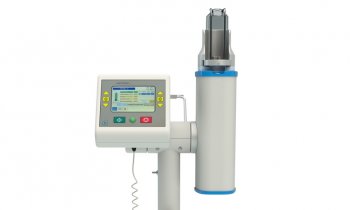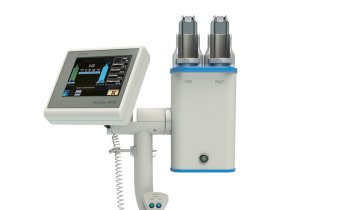EVINCI
The European multi-centre, multi-modality cardiac imaging project that could lead to a more intelligent and less costly use of today's technology in cardiac care.
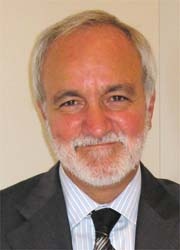
An advanced phase of negotiation has been reached with the European Commission (EC) for a proposed three-year, multi-centre project, with multi-modality imaging as the major focus. If the EC contract is agreed this November, the EVINCI (EValuation of INtegrated Cardiac Imaging) study will become one of the two projects dealing with cardiac imaging among the almost 200 projects approved in the FPVII Health of the EC. All being well, the study will begin in January 2009.
17 partners in nine European countries will be involved: 14 clinical centres (three in Spain, four in Italy, and one each in Paris, Zurich, Munich, London, Leiden, Turku and Warsaw). The European Society for Cardiology (ESC) will disseminate results; CFC Consulting in Milan will provide project management, and InforSense in London will provide the informatic background for integrated analysis of multiparametric data and for development of advanced softwares dedicated to innovative multi-modality imaging clinical reporting systems.
Danilo Neglia MD PhD, Head of the PET and PET-CT Unit at the Institute of Clinical Physiology, National Research Council, in Pisa, Italy, spoke with European Hospital representative Gabriela Eriksen at this year’s ESC Meeting, to describe the impressive potential of EVINCI .
Why this study? We think that advanced imaging technology has progressed in the last few years somewhat further than scientific evidence in the field of cardiovascular applications. On one side, this is a good thing, since technology is giving us new, unexpected, powerful tools for the non-invasive and widespread assessment of vessels anatomy and function. On the other side, the cardiological community is still not able to define clearly which will be the additional value of each of these technologies and of their combination in the clinical arena. EVINCI promises to be a relevant study, because its major objective is to provide objective evidence of the clinical role of multimodality imaging for the early diagnosis, complete characterisation and targeting of treatment in patients with suspected Coronary Artery Disease (CAD). CAD is the major cause of morbidity and mortality in developed countries and one of the major sources of sanitary costs.
We’ll select a wide population of patients in Europe with an intermediate probability of CAD based on individual risk factors, clinical observation, biohumoral profile and a preliminary stress ECG test. In this subset of patients non-invasive imaging is expected to be most cost-effective. Every patient, fulfilling inclusion and exclusion criteria and providing an informed consent, will be submitted to a complete non-invasive imaging evaluation. Multislice CT will be used to define coronary anatomy. Radionuclide imaging (either SPECT or PET) will be performed to measure myocardial perfusion at rest and during stress. In each patient the possible effects of myocardial ischemia on ventricular function will also be assessed by either Magnetic Resonance (MR) or Echocardiography (Echo). Patients will then undergo heart catheterisation as a reference method to define the presence and the extent of coronary disease and its effects in limiting blood flow to the myocardium. Finally, the patients will be followed up for a maximum of three years and events will be recorded. The major end point of EVINCI will be to assess the ability of non-invasive multimodality imaging to recognise in the single patient not only if coronary disease is present but if it mainly involves the major coronary arteries or the microvessels and, most importantly, if it causes ischemia and hence should be aggressively treated – all these without submitting the patient to a costly and potentially risky invasive catheterisation.
We expect that multimodality cardiac imaging will allow the recognition of four different populations among patients presenting with suspected CAD; first, patients with evidence of anatomical CAD (as documented by CT abnormalities of the major coronary vessels) able to cause myocardial ischemia (as documented by stress induced perfusion defects at radionuclide imaging and/or contractile dysfunction at MR or Echo). Available data demonstrate that these patients will greatly benefit from coronary revascularisation.
A second group of subjects will have anatomical CAD, but with absent or negligible functional relevance, i.e. without evidence of myocardial ischemia. Currently, in most European countries, these patients are hospitalised, and submitted to coronary revascularisation mainly because the functional information is not available or disregarded. There is some recent evidence that their prognosis could not be improved or even worsened by revascularisation, not to take into account the induced sanitary costs of this approach. It is evident that if we will be able clearly to recognise, non-invasively, these two classes of patients we will spare non-useful, potentially harmful and costly procedures.
A third group of patients will show minor coronary anatomic lesions but severe myocardial perfusion abnormalities. At present, this category is underestimated. These subjects have disabling anginal symptoms, they may have myocardial ischemia and hence a poor prognosis not different from that of patients with ‘classical’ CAD. Nevertheless, they are undertreated because their disease is not recognised. Very recent data have been collected on these types of patients, demonstrating that the cause of their symptoms is still a coronary disease but diffusely involving the vascular endothelium and/or the microvessels. If this condition is recognised it could precede full blown CAD and should be aggressively treated by reducing risk factors and by drugs able to improve coronary vascular function.
In the fourth group of patients every test will be negative. These subjects can be completely reassured without performing other invasive procedures.
Patients participating to the EVINCI Study will be followed and treated by their referring clinicians according to current good clinical practice and European guidelines. Possibly the clinicians will be advantaged in their decision-making by the additional information that will be available in each patient. Moreover, one of the important goals of the project is to reduce to minimum the procedural risks and the radiation exposure. Procedural risks and costs will be strictly monitored during the protocol and a cost-benefit analysis will be one of the major expected outputs of the study.
What are the expected benefits from the EVINCI results? Early diagnosis and accurate characterisation of coronary disease by multimodality imaging in anginal patients could avoid non-useful invasive procedures in about three in four 4 subjects. If this approach will demonstrate accuracy, we could think that, in the future, heart catheterisation will be no more needed for diagnostic purposes in CAD but could be mainly reserved for interventions, i.e. to revascularise coronary stenosis causing myocardial ischemia. Multimodality imaging approach could be apparently more costly in the beginning but definitively cheaper in the end. In the cost/risk-benefit work-package of the study, we will evaluate this hypothesis. Moreover, we should also be able to define the most cost-effective diagnostic work-up for the recognition of ‘significant’ CAD among the different imaging modalities or combination of modalities. The other point worth mentioning is that, with this approach, we could recognise patients who don’t have full blown CAD (a stenosis to be revascularised) but are at high risk of future events due to functional abnormalities of the coronary system. We know that these patients, if unrecognised and left untreated, are at increased risk of developing myocardial infarction or heart failure. Again, resources used to recognise this population will save lives and spare future health costs. Finally, in the future, results coming from the EVINCI Study could help to tailor specific imaging modalities or combination of techniques to specific patients. Choosing the most cost-effective approach for the specific clinical question will avoid redundancy in using technology in medicine. A particular advantage of the experimental design of the EVINCI Study lies in the presence of independent core-labs for each different imaging modality. They will receive anonymised raw-data and would provide their analysis that will be compared with results from other modalities and clinical outcome only at the end. This approach could ensure a fair comparison of different modalities even if this is not the major goal of the study.
In terms of collaboration, there were no real difficulties in involving different countries in the project. I must say that it could be possibly more complicated to make different specialists to cooperate in the same Institution (radiologists with cardiologists and nuclear medicine specialists) than convincing countries from northern, middle, Mediterranean and east Europe to work together. The Working Group Five of the ESC on Nuclear Cardiology and Cardiac CT made an incredible effort to design and support the EVINCI project from its beginning. We believed that this could be a landmark study in cardiology, potentially able to change the approach to coronary artery disease in the near future. The process began almost two years ago; now we are crossing our fingers as we wait for the final signature of the contract with the EC. I don’t expect major problems, but simply cannot say at present.
One of the problems is that the budgeting from the EC is underestimated for the actual costs of this study. Apart from enrolling 700 patients, our study will probably involve about 100 people, because every centre should provide specialists for different modalities. It’s a very big study. However, since many relevant clinical centres and universities are involved throughout Europe, we expect a substantial local economical support.
Of course we don’t know what the final results will be, but I guess we’ll end up saying that if proper technology is selected for the right patient the information that we can get will be exceptionally useful for the appropriate management of that patient. We could reduce his risks, effectively treat his disease and optimise health costs. Everyone will learn from this information. I think the study will not demonstrate that we must use all techniques for every patient, but that every one of these techniques will be helpful in specific questions. In one sentence no ‘intelligent’ technique can replace our intelligence. ”
28.10.2008




